Haemul Pajeon is the most delicious Korean savory pancake with layers of scallions, minari, scallops, beef and minari in sweet flour and egg batter that’s fried till crispy on the outside and moist and soft on the inside. A great appetizer or side dish to any meal!
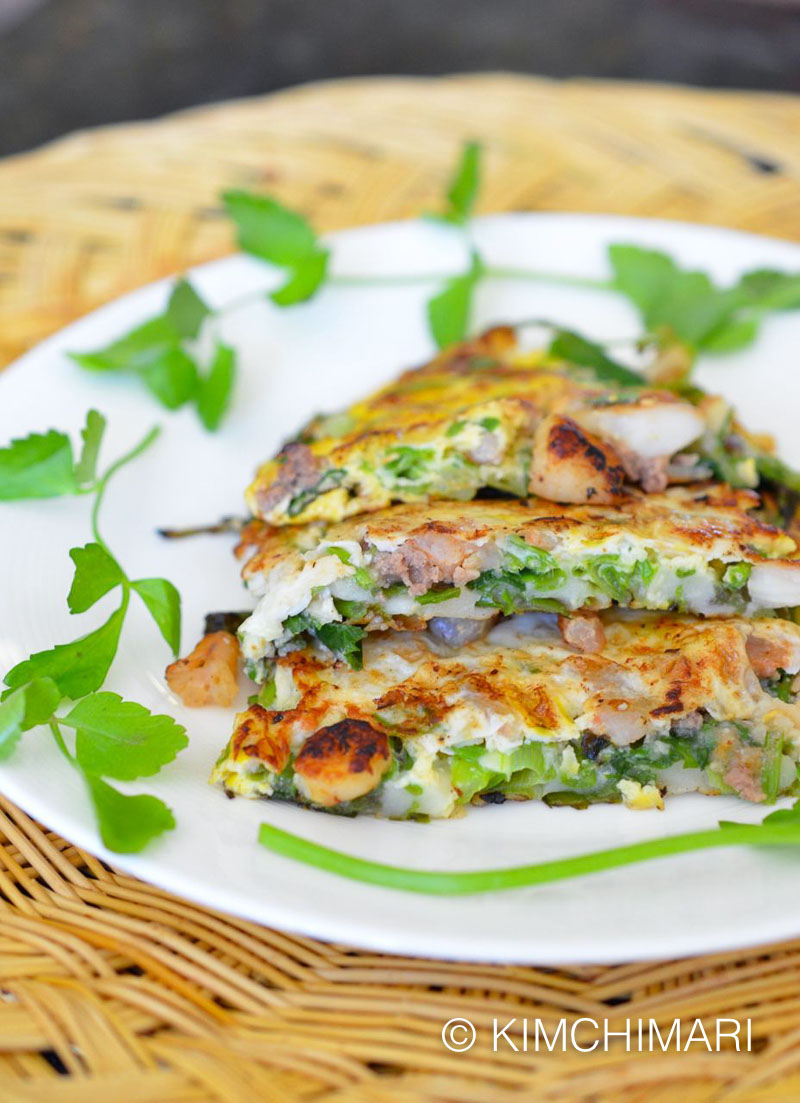
I have been trying to perfect the recipe for this very yummy Haemul Pajeon for a long time. Partly because the dish was always made by a professional chef who came to cook for my parent’s Diplomatic dinner parties when I was growing up. Mrs. Shim was her name and anything she made was just so delicious.
So when we had these dinner parties, I waited and waited until dinner was all served (at least 9pm or so?) so I could have the leftovers because they were all so good. I secretly hoped that the guests had small stomachs or was too proper and did not ask for seconds.. 🙂 so I could have the leftovers!! Also, another way I got to taste Mrs. Shim’s food was to hang around in the kitchen all day and seek opportunities for tasting or cleaning up defective ugly pieces that did not meet her standard. 😝
This special kind of Haemul Pajeon is also called Dongrae/Dongnae Pajeon (동래파전)- named after the region of Dongrae/Dongnae which is basically the area of the city of Busan today. For some reason, this pancake loaded with green onions and tons of seafood has lost popularity over the years and I almost forgot about it.
But recently, I was reminded of this fabulous pancake when my nephew SW bragged about the delicious Dongrae Pajeon made by his wife EH who is from Busan. So.. thank you EH for the inspiration!!
What makes this recipe different from other Haemul Pajeon?
Unlike the common, everyday Pajeon which is made by just mixing everything together – batter, seafood, vegetables and all – Dongrae/Dongnae Pajeon is made in several steps or layers which is more work but definitely worth the effort. It is much more flavorful because there are less batter, more seafood and tons of green onions AND MINARI.
READ MORE about How to grow, eat and cook MINARI.
Is your mouth watering yet? Mine is… 😉 Let’s get cooking then –
OH! BTW – I provide 2 sauces in the recipe but you can certainly make just one. Chokanjang is the usual soy sauce served with most Korean Pancakes but try Chogochujang, I made it at the suggestion from my nephew’s wife and I was surprised how good it tasted together!
How is it supposed to taste?
Different from other Korean savory pancakes like Hobak Buchimgae (zucchini pancake) or Buchu Jeon (chive pancake), this will be thicker, have both chewy texture (minari) and soft texture. The outside of this Haemul Pajeon should be CRISPY but the inside will be soft and wet. That’s how it’s supposed to be. It may even feel like it’s not fully cooked because it may feel even a bit gummy but as long as all the seafood and meat are cooked, it’s fine.
Taste-wise, it will be a wonderful mix of seafood flavor, meaty flavor with the wonderful mild sweetness and oniony flavor in the background which comes from the green onions. And finally, the Minari (water dropwort) wakes up everything with that hint of herbaceousness. So, it will be just wonderful!!
Chef’s Tips for Perfect Pancake
- This pancake needs assembling during cooking so it’s a must that you have all the ingredients prepped and ready to go before you start cooking.
- The original version includes chopped clams so try that if you like clams. Calamari, mussels, oysters are also great additions or substitutions
- No rice flour? Use 3/4 C flour and 3/4 sweet rice flour to make the batter if you don’t have regular rice flour
- Make it simple – if you don’t have seafood, just make it without – it’s still yummy!
- Substitute for Minari (water dropwort) – try watercress, flat-leaf parsley or even cilantro (but just a little bit since the flavor is strong)
Haemul Pajeon – Korean Seafood Scallion Pancake
Servings: 3 pancakes (6×4 in) Cooking Time: 40 Difficulty: Medium
Ingredients
- 7 oz (200 g) young green onions (approx 2 bunches), thinner the better
- 2 oz (50 g) minari/water dropwort or water cress – optional
- 4 oz (100 g) small shrimps (frozen is fine)
- 4 oz (100 g) bay scallops and/or chopped clams
- 3 oz (75 g) ground beef
- 2 tsp soy sauce (진간장 jinkanjang)
- 1 tsp plum syrup (maesil extract 매실액) or 1/2 tsp sugar
- 1 tsp mirin or rice wine or sake
- 1/2 tsp sesame oil
- 1/2 tsp chopped garlic
- 1/2 C (50g) regular flour
- 3/4 C (150g) rice flour
- 1/4 C (50g) sweet rice flour
- 1 tsp salt
- 1 ~ 2 egg
- vegetable oil for pan frying
- 2 C (360 ml) anchovy stock or water
- Chokanjang (sour soy sauce)
- 1 Tbs soy sauce
- 1 Tbs vinegar
- 1 Tbs water
- 1/2 tsp sugar
- sprinkle of sesame seeds
- Chogochujang (spicy sweet red pepper sauce)
- 1 Tbs Korean Gochujang (red pepper paste)
- 1 Tbs vinegar (rice wine or white) or 1 Tbs lemon juice
- 1 1/2 tsp sugar
- sprinkle of sesame seeds
*** If scallops or shrimps are frozen, thaw them in the fridge for several hours or overnight.
- Make Chogochujang sauce by mixing gochujang, vinegar, sugar and sesame seeds.
- Make Chokanjang sauce by mixing soy sauce, vinegar, sugar and water. Set aside.
- Clean green onions and minari (water dropwort). Cut green onions 6 in (15 cm) long. This is usually 1/2 of the full length of green onions sold in US.
minari (water dropwort) and young green onions The green onions should be young and tender – called 실파(shilpa) in Korean. If your green onions are any thicker than 1/2 in (1 cm) then cut it in half or smash the white part with the side of your knife to make it tender.
Smashing green onions with a knife - Cut minari 3 ” (7 cm) long. About 1/2 length of your green onions. Reason for cutting minari shorter is because they are quite fibrous and will be too chewy if left too long. Normally, only minari stems are used but these minaris are quite young and tender so you can use the leaves too. Use minari leaves as garnish and serve on the side to add a touch of freshness to your pajeon. (See serving suggestion pic at the end of post)
Cutting minari/water dropwort - My thawed shrimps (pre-cooked) and bay scallops. Bought frozen from the Korean market. Cute aren’t they?
Thawed shrimp and scallop - Chop scallops and shrimp roughly into big chunks.
- Season ground beef by adding soy sauce, mirin, maesil syrup or sugar, chopped garlic and sesame oil.
- In a small bowl, whisk egg. In another bowl, make batter by mixing flour + rice flour + sweet rice flour and anchovy stock. Rice flour likes to settle to the bottom so stir it well and be sure to stir right before you use it.
- Now we are ready to make the pancake! You should have all the prepared ingredients next to your pan (mise en plance) like this (minus oil) –
Haemul Pajeon (Korean scallion seafood Pancake) ingredients - Heat a nice thick pan (cast iron is great) on med-high heat. Pour about 2 T oil into pan. Layer green onions in pan and then minari on top:
- Pour batter over green onions and minari. DO NOT try to cover all the green onions with the batter – you will end up adding too much batter. Pancake will taste doughy if you have too much batter. Pour about 2-3 Tbs per pancake – just enough for green onions to hold together.
- Quickly (lower heat to med. if you think it’s burning) dot the pancake with ground beef + scallops + shrimp. Using your hands works best – just be careful! Top with 1/3 of whisked egg (pancake on the right). If you like eggs, you can use up to 1 whole egg per pancake.
- Turn the pancake over to cook the other side.
Step-by-Step How to fry Pajeon in pan - Let it cook for another 2 min or so until pancake is nicely browned.
Dongrae Pajeon – Korean Seafood Green Onion Pancake with Chogochujang
And here it is!! Serve it with both Chogochujang or Choganjang sauces or drizzle the sweet and sour gochujang sauce on top!
Serving Suggestions
- This Dongrae Pajeon (Korean Seafood Green Onion Pancake) pairs wonderfully with Korean Rice Wine – Makgeolli/Makgeoli/Maguli (막걸리) so give it a try!!
Haemul Pajeon - Korean Seafood Scallion Pancake
Ingredients
- 7 oz young green onions
- 2 oz minari or water dropwort or water cress
- 4 oz small shrimps (frozen is fine)
- 4 oz bay scallops and/or chopped clams
- 1/2 C regular flour
- 3/4 C rice flour
- 1/4 C sweet rice flour
- 2 C anchovy stock or water
- 1 tsp sea salt
- 1 - 2 egg
- vegetable oil for pan frying
- 3 oz ground beef
Seasoning for Beef
- 2 tsp soy sauce
- 1 tsp plum syrup
- 1 tsp mirin or rice wine or sake
- 1/2 tsp sesame oil
- 1/2 tsp chopped garlic
Cho ganjang - Sour Soy Sauce
- 1 Tbsp soy sauce
- 1 Tbsp vinegar
- 1 Tbsp water
- 1/2 tsp sugar
- sprinkle of sesame seeds
Cho gochujang - Sweet and Sour Gochujang Sauce
- 1 Tbsp Korean Gochujang (red pepper paste)
- 1 Tbsp vinegar (rice wine or white) or 1 Tbsp lemon juice
- 1 1/2 tsp sugar
- sprinkle of sesame seeds
Instructions
- Make Chogochujang sauce by mixing gochujang, vinegar, sugar and sesame seeds.
- Make Chokanjang sauce by mixing soy sauce, vinegar, sugar and water. Set aside.
- Clean green onions and minari. Cut green onions 6 in (15 cm) long or 1/2 of the full length of green onions sold in US. The green onions used for Pajeon should be young and tender - called (shilpa) in Korean. If your green onions are any thicker than 1/2 in (1 cm) then cut it in half or smash the white part with the side of your knife to make it tender.
- Cut minari 3 " (7 cm) long. About 1/2 length of your green onions from 3. Reason for cutting minari shorter is because they are quite fibrous and will be too chewy if left too long. Normally, only minari stems are used but these minari are quite young and tender so use the leaves too.
- Chop scallops and shrimp roughly into big chunks.
- Season ground beef with soy sauce, mirin, maesil syrup or sugar, chopped garlic and sesame oil.
- Whisk egg in a small bowl.
- In another bowl, make batter by mixing flour + rice flour + sweet rice flour + anchovy stock + salt. Rice flour likes to settle to the bottom so stir it well and be sure to stir right before you use it.
- Now we are ready to make the pancake! You should have all the prepared ingredients next to your pan.
- Heat a nice thick pan (cast iron is great) on med-high heat. Pour about 2 T oil into pan.
- Layer green onions in pan and then minari on top.
- Pour batter over green onions and minari. DO NOT try to cover all the green onions with the batter - you will end up adding too much batter. Pancake will taste doughy if you have too much batter. Pour about 2-3 Tbs per pancake - just enough for green onions to hold together.
- Quickly (lower heat to med. if you think it's burning) dot the pancake with ground beef + scallops + shrimp. Using your hands works best - just be careful!
- Top with 1/3 of whisked egg (pancake on the right). If you like eggs, you can use up to 1 whole egg per pancake.
- Turn the pancake over to cook the other side.
- Let it cook for another 2 min or so until pancake is nicely browned.
Tips & Notes:
- If scallops or shrimps are frozen, thaw them in the fridge for several hours or overnight. Cho Gochujang is the original sauce that goes with Dongrae Pajeon but you can also serve Cho Ganjang sauce for a non-spicy option.
- This Dongrae Pajeon (Korean Seafood Scallion Pancake) pairs wonderfully with Korean Rice Wine – Makgeolli/Makgeoli/Maguli (막걸리) so give it a try!!
- Original version includes chopped clams so try that if you like clams
- Calamari, mussels, oysters are also great additions or substitutions
- Use 3/4 C flour and 3/4 sweet rice flour to make the batter if you don’t have regular rice flour

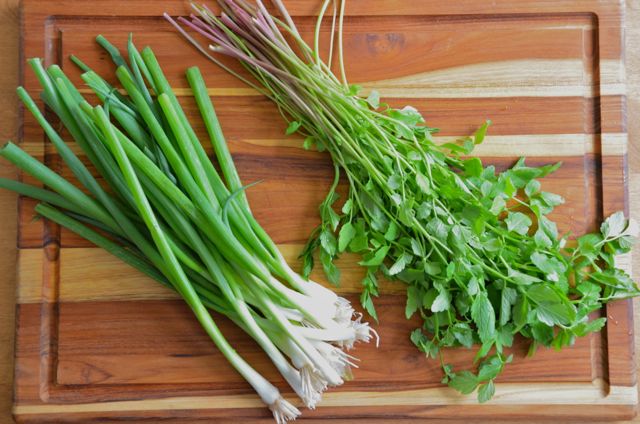

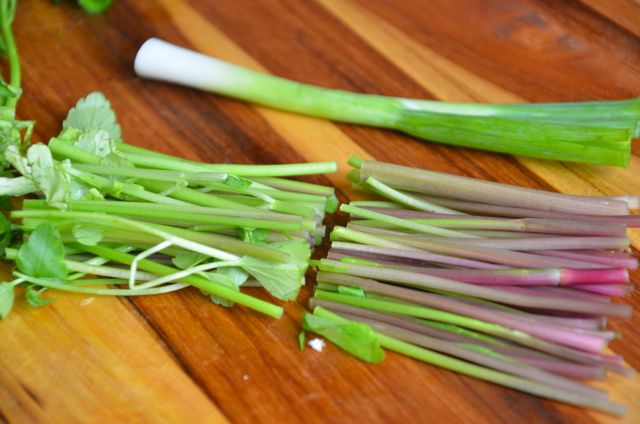
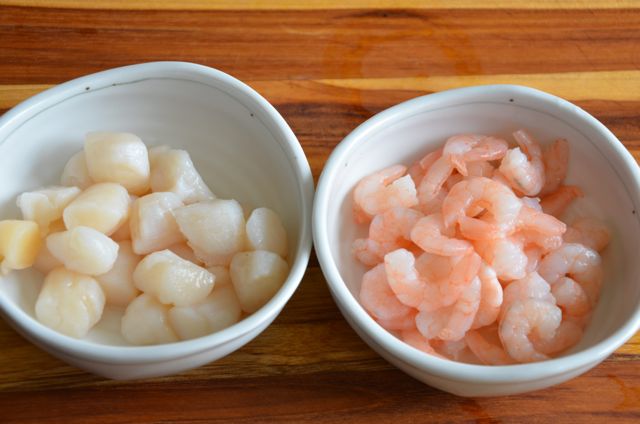
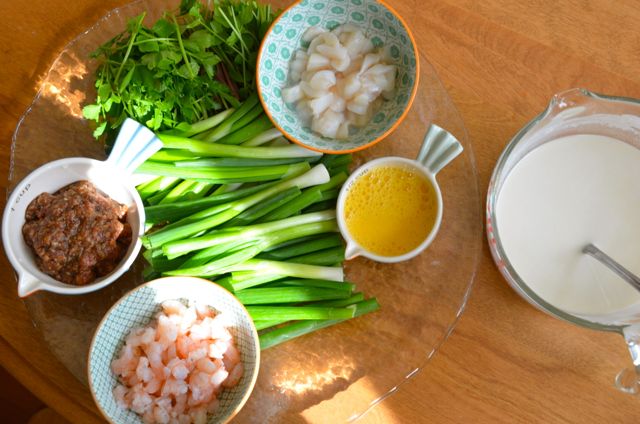
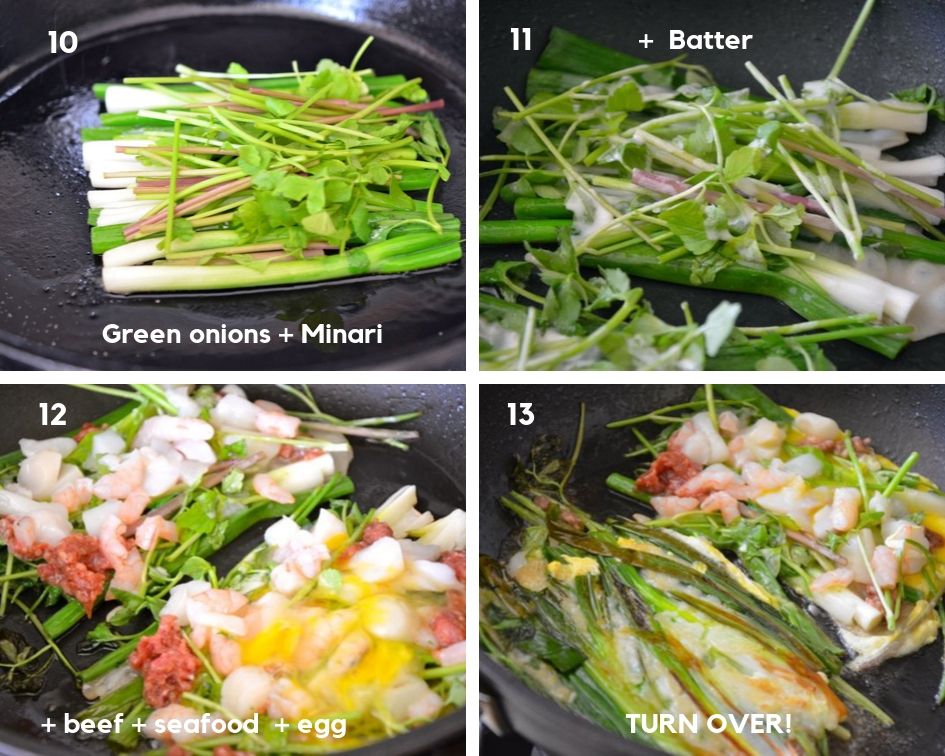
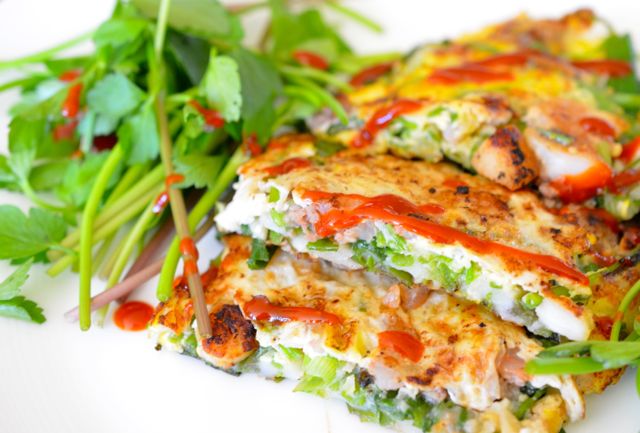
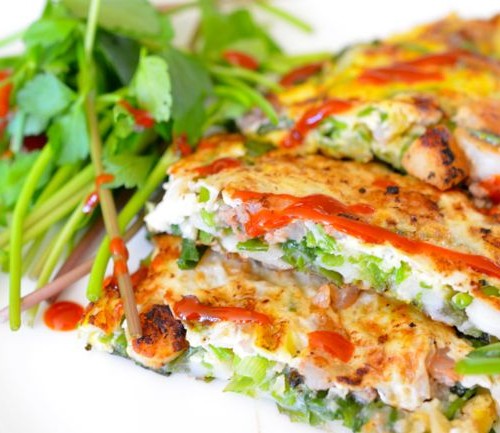
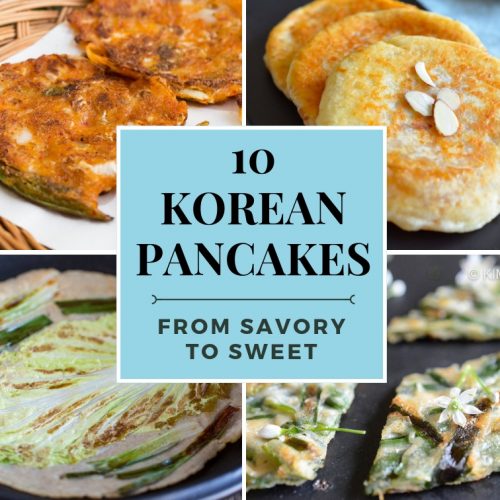
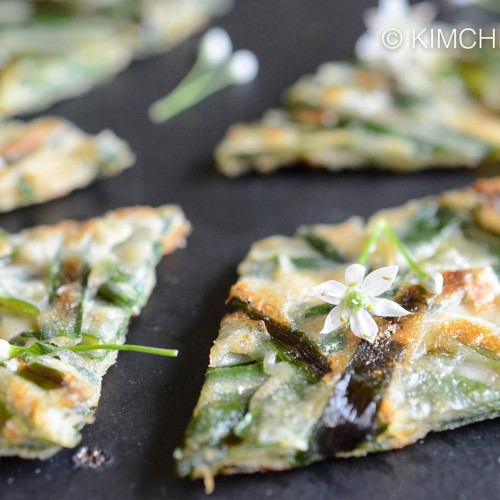
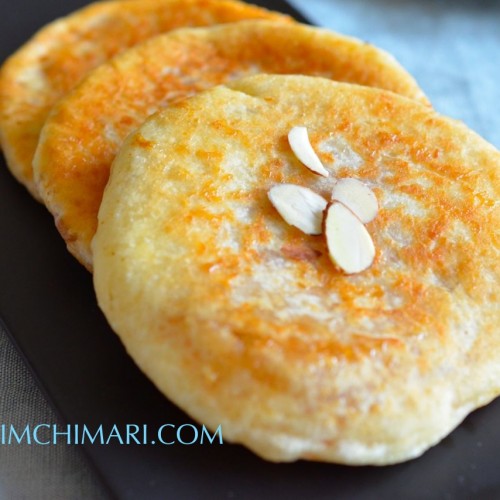
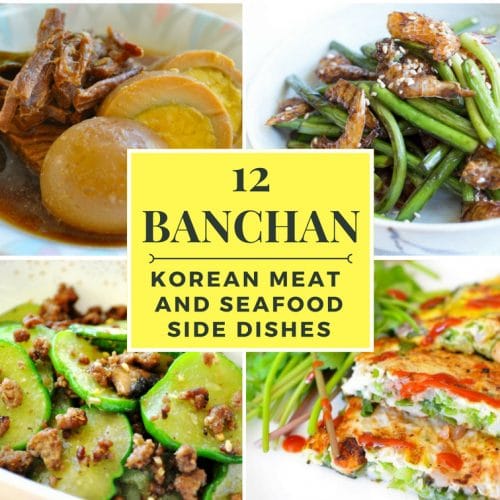
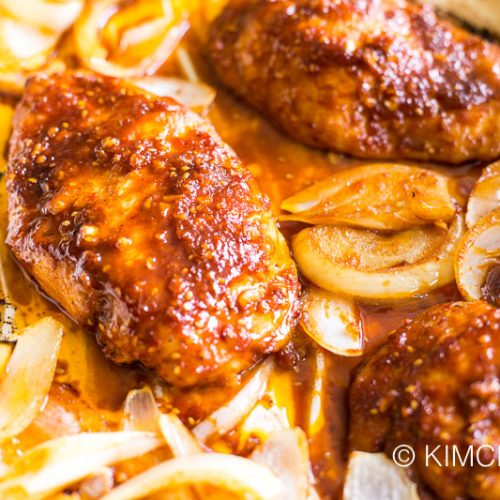
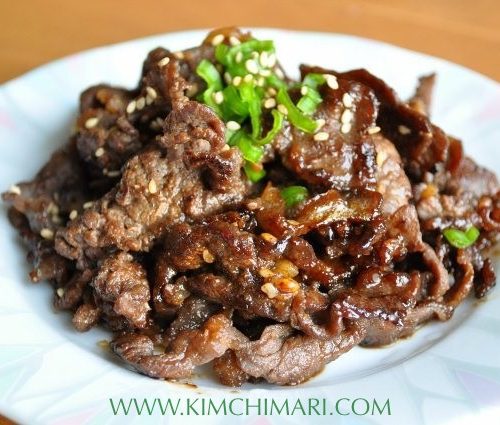
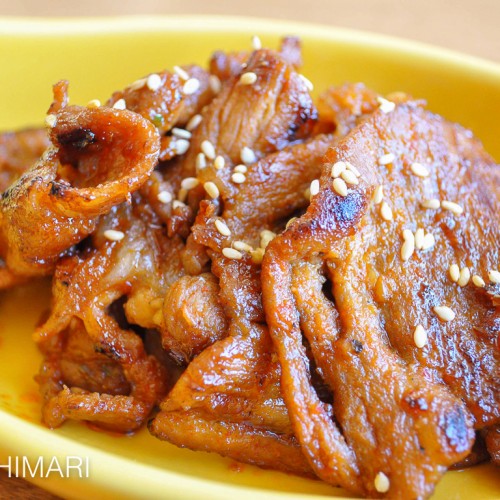
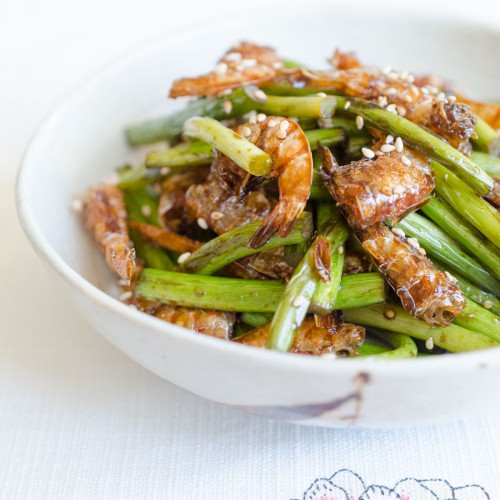
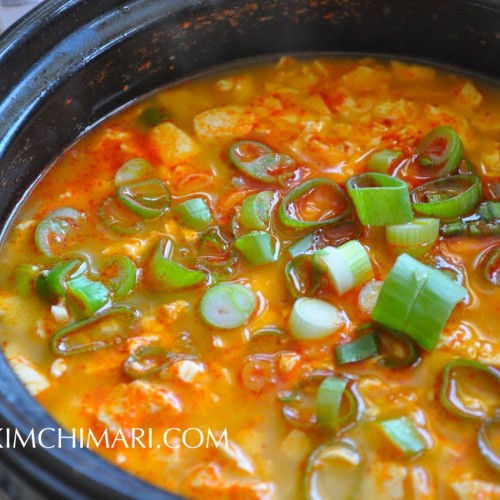
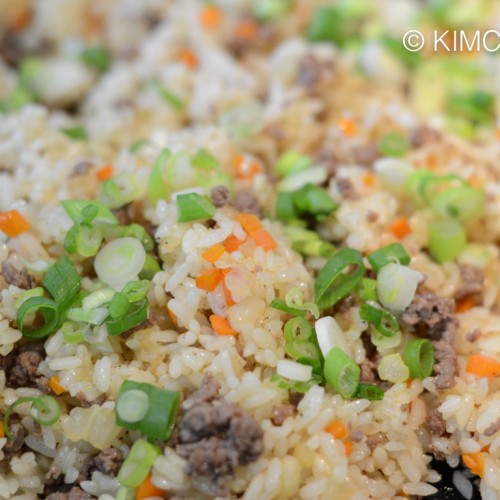
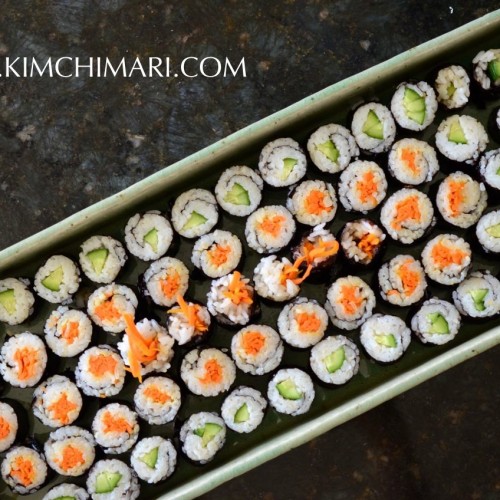
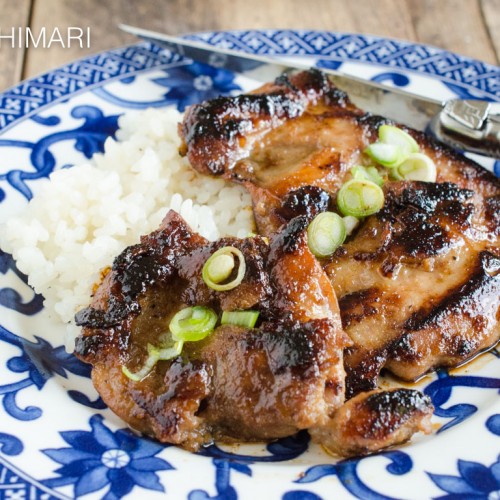
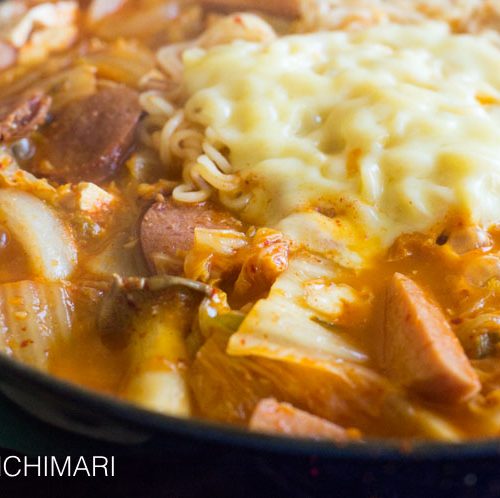






Wow! This looks very good. Unfortunately, my spouse is allergic to seafood and poultry. How would you modify this recipe to accommodate those restrictions and still be authenitic?
Hi Roxann, you can just omit the seafood and use just scallions, meat and egg. You couldn’t call it Haemul Pajeon but it will still be a variation of Pajeon. Enjoy!
I always order this when we go out to Korean restaurant but don’t feel great afterwards becuase they are usually oily. I can enjoy a healthy, non greasy version at home .Luv it! Thank you!!
Yay!!! Precisely! I am often disappointed with the quality of the pancakes served at many Korean restaurants and prefer homemade ones myself too. Glad you like it! Thank you for leaving me 5 stars!!
The family will love this!
Thank you Betsy! This the one I made for you and phil when I visited you couple years ago in aptos. Enjoy!
I just finished making this and we are devouring it! My favorite Korean food place closed and I thought I’d give this recipe a try. I’m so glad I did!
I know I didn’t make it right, but it tastes good! I made it in a big electric skillet as one big pancake because I wanted to add on extra toppings and eggs. I should have gotten more green onions though. I couldn’t find rice flour of any sort at the market and had to use regular gluten free flour. I think it made them too heavy.
I love getting your recipes in my email. I think I like this one best so far!
Thank you thank you!! Soo happy to hear that you enjoy my recipes and email.
My wife is from Busan, and she makes something very much like this on rainy days. It is truly delicious! Thank you for all the amazing recipes. I look forward to reading all of them, and trying more than a few. Though I’m American, I spent several years in Seoul in the 1980s and fell in love with the food and the people there. Yours is one of the very best Korean recipe sites I’ve found so far.
Hi! Thanks so much for appreciating my work! It is such a great encouragement~ Yes, somehow Pajeon and rainy days go very well together doesn’t it? Thank you for falling in love with Korean food – hope you find other recipes useful. All my best –